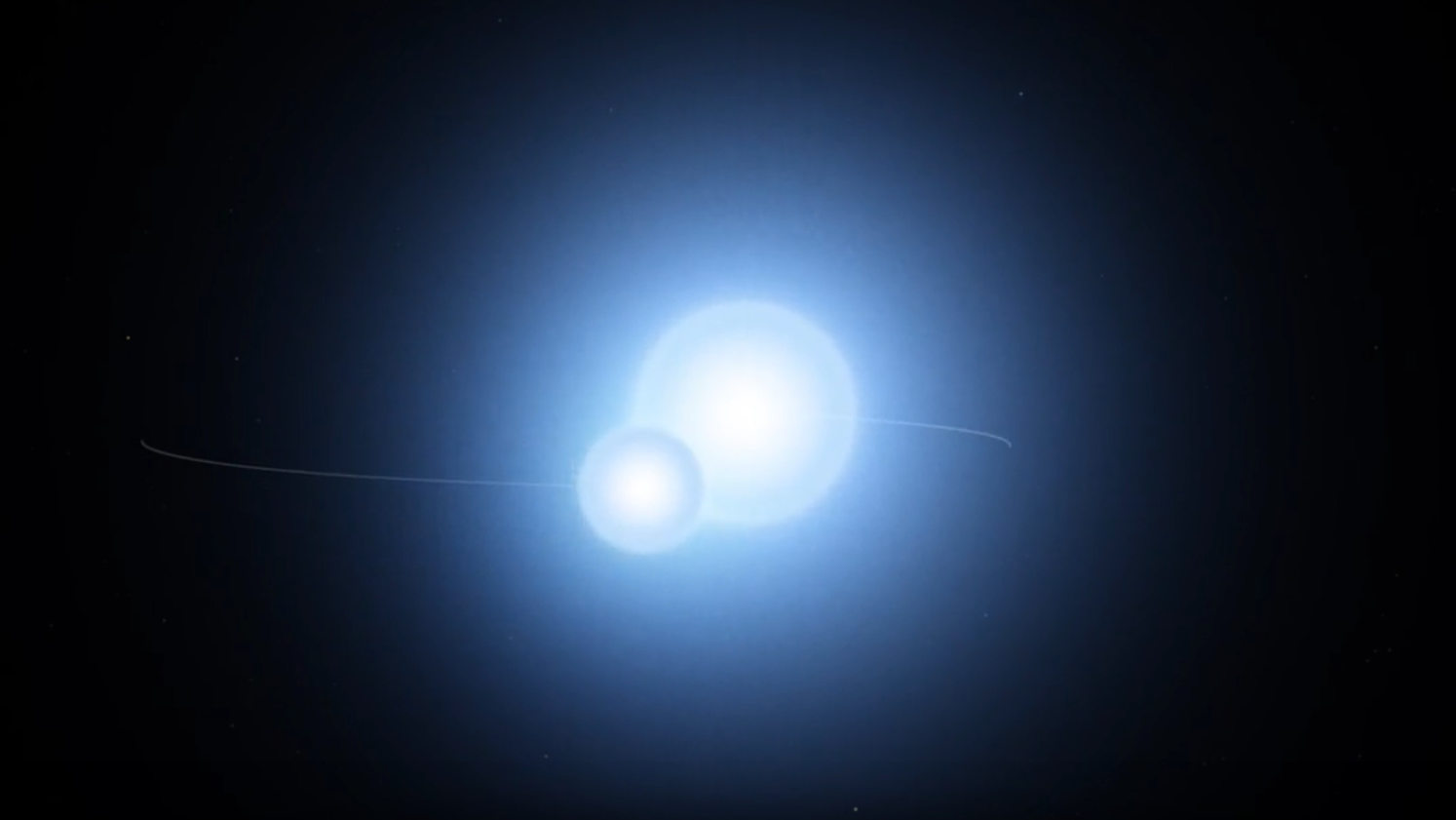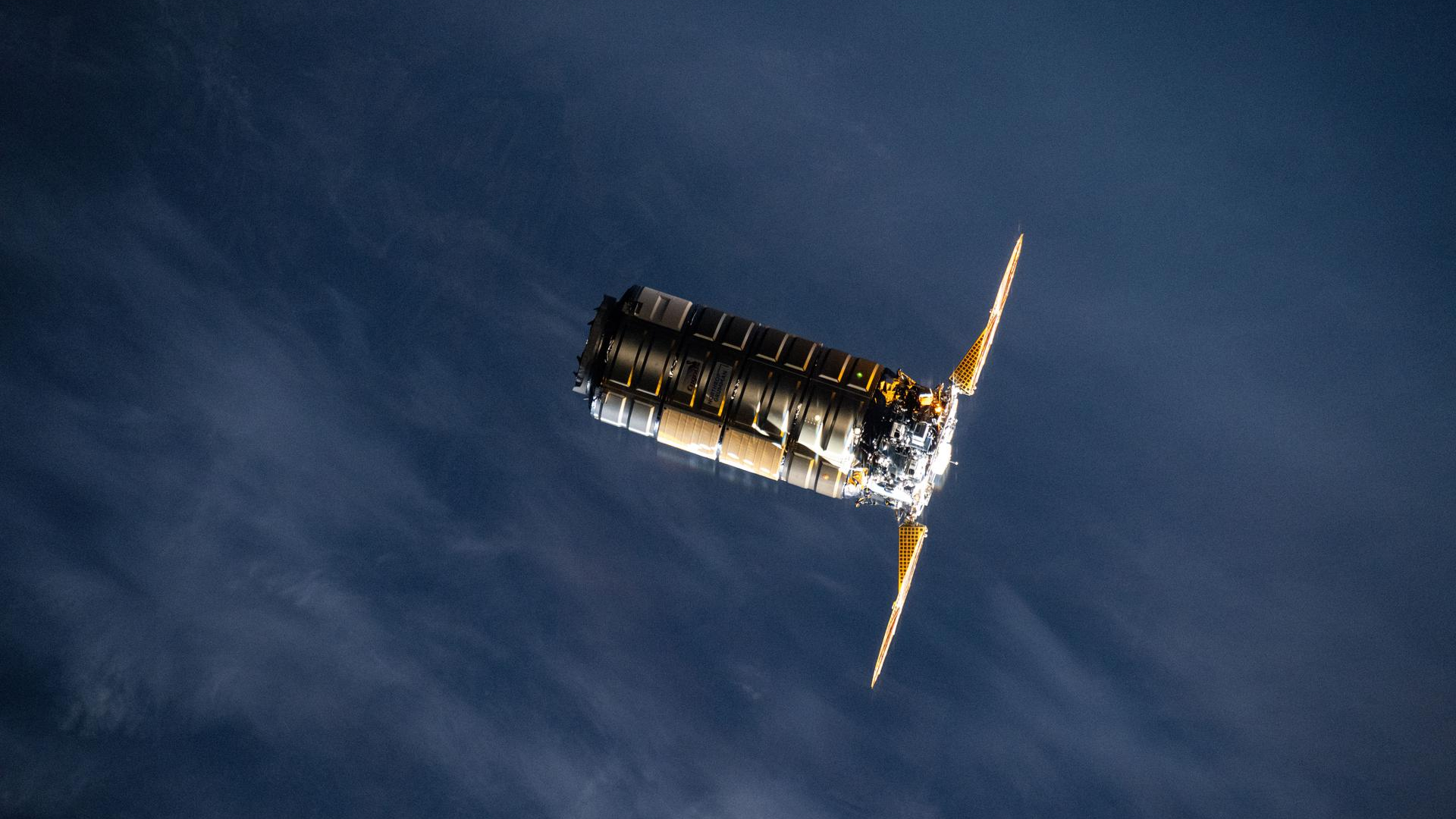Scientists find rare double-star system where one star orbited inside the other
Only 16 to 84 other examples of this exotic system may exist in our entire galaxy.

Astronomers may have discovered a rare type of binary star system, where one star used to orbit inside its partner.
In the new study, astronomers investigated a pulsar known as PSR J1928+1815 located about 455 light-years from Earth. A pulsar is a kind of neutron star, a corpse of a large star that perished in a catastrophic explosion known as a supernova. The gravitational pull of the star's remains would have been strong enough to crush together protons and electrons to form neutrons, meaning a neutron star is mostly made of neutrons. That makes it very (very) dense.
Pulsars are spinning neutron stars that emit twin beams of radio waves from their magnetic poles. These beams appear to pulse because astronomers see them only when a pulsar pole is pointed at Earth. The researchers estimate this particular pulsar was born from a hot blue star more than eight times the sun's mass.
Using the Five-hundred-meter Aperture Spherical radio Telescope (FAST) in China, the world's largest single-dish telescope, the astronomers discovered PSR J1928+1815 had a companion, a helium star with about 1 to 1.6 times the sun's mass. This star has lost most — or all — of its outer layers of hydrogen, leaving behind a core made up mostly of helium.
These stars in this pair are currently only about 700,000 miles (1.12 million kilometers) apart, or about 50 times closer than Mercury is to the sun, study co-author Jin-Lan Han, chair of the radio astronomy division of the National Astronomical Observatories of the Chinese Academy of Sciences in Beijing, told Space.com. They complete an orbit around each other in just 3.6 hours.
PSR J1928+1815 is a millisecond pulsar, which means it whirls extraordinarily rapidly, spinning nearly 100 times a second. Millisecond pulsars typically reach these dizzying speeds as they cannibalize nearby companions — the inrushing material makes them gyrate faster and faster.
Previous research suggested that, as millisecond pulsars feed on their partners, these binary systems may experience a "common envelope" phase, in which the pulsar orbits within the outer layers of its companion. However, scientists have never detected such exotic binaries — perhaps until now.
Breaking space news, the latest updates on rocket launches, skywatching events and more!
Using computer models, the researchers suggest the members of this newfound binary started at a distance from each other about twice that between Earth and the sun (185 million miles, or 299 million km), Han said. The pulsar would have then started siphoning off its companion's outer layers, forming a common envelope around them both. After roughly 1,000 years, the pulsar would have spiraled close to its partner's core, which likely flung away the last of this envelope, leaving behind a tightly bound binary system.
Based on the estimated number of binary stars in the Milky Way that roughly match this newfound system, the researchers suggest only 16 to 84 counterparts of PSR J1928+1815 and its companion may exist in our galaxy. (For context, the Milky Way hosts about 100 billion to 400 billion stars.)
The scientists detailed their findings online May 22 in the journal Science.

Charles Q. Choi is a contributing writer for Space.com and Live Science. He covers all things human origins and astronomy as well as physics, animals and general science topics. Charles has a Master of Arts degree from the University of Missouri-Columbia, School of Journalism and a Bachelor of Arts degree from the University of South Florida. Charles has visited every continent on Earth, drinking rancid yak butter tea in Lhasa, snorkeling with sea lions in the Galapagos and even climbing an iceberg in Antarctica. Visit him at http://www.sciwriter.us
You must confirm your public display name before commenting
Please logout and then login again, you will then be prompted to enter your display name.
